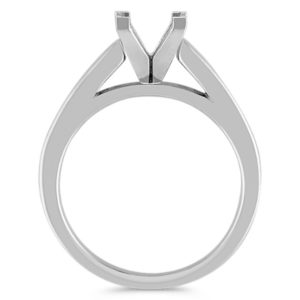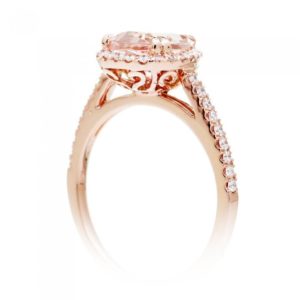
The cathedral setting is one of the most elegant and classic ways of displaying a diamond or gemstone. Similar to the graceful arches of a cathedral, this ring setting uses arches of metal to hold the stone firmly in place.

The cathedral can be set with prongs, bezel, or tension setting since the defining characteristic of this ring is not how the diamond is held, but rather how it is mounted with arches above the shank framing it on either side.

The advantages of this setting are that the arches, surrounding the centre stone, add extra height and make the centre stone appear larger, thus accentuating the perceived carat size. The arches also provide protection for the centre stone, particularly the girdle and table where they extend the full height of the stone. This is particularly beneficial for softer gemstones such as an opal, turquoise, lapis or tanzanite. In addition, the added flare and style of this setting reduces the need for side or extra stones, thus saving expense.

There are some disadvantages to this setting. The arches can be disproportionate or ostentatious when paired with a large gem or multi-stone ring. Also, raising the diamond high above your finger may increase the likelihood of snagging and damaging the ring. Finally, the arches making up the extra metal-work can be difficult to clean as dirt and grease can build up in the small crevices. This is especially problematic for a wearer with an active lifestyle.

Variations
A cathedral setting is a classic choice but it can take on many subtle variations including the following:
Different arch degrees, from very small arches to dramatic curves that frame a high setting.
Either convex or concave curves to the arches.
Square, rounded, or tapered edges to both the length and the point of the arches.
Different arch widths proportionate to the jewellery itself or the size of the gemstone.
Arches that may or may not nestle between the prongs holding the central gemstone.
Solid or split band arches.
Four-prong cathedral setting with basket design.


